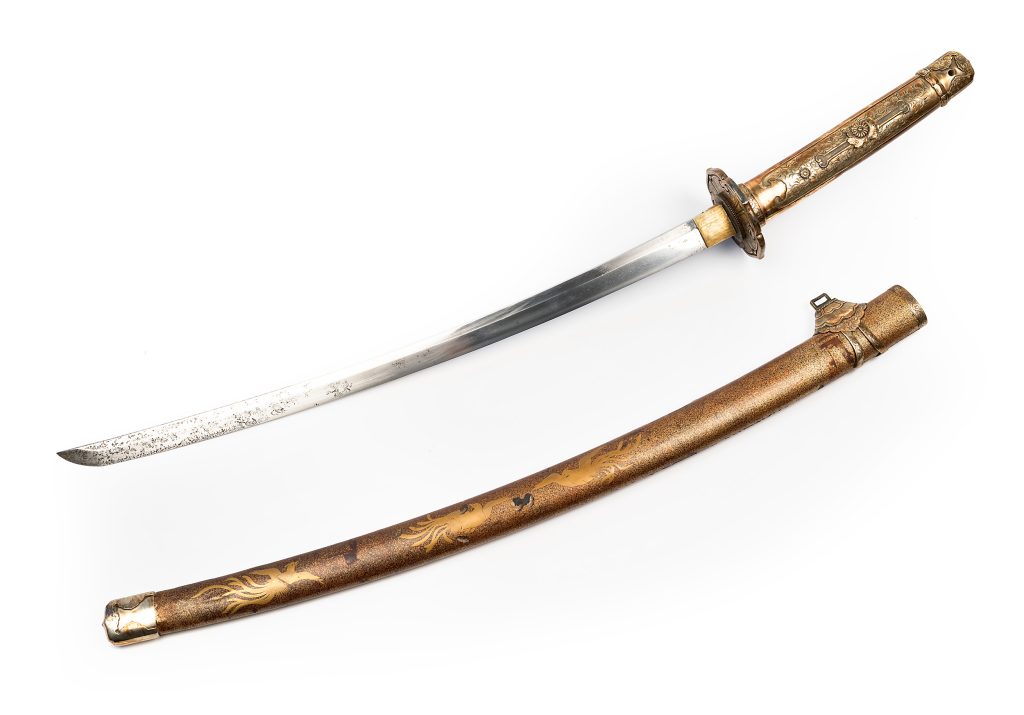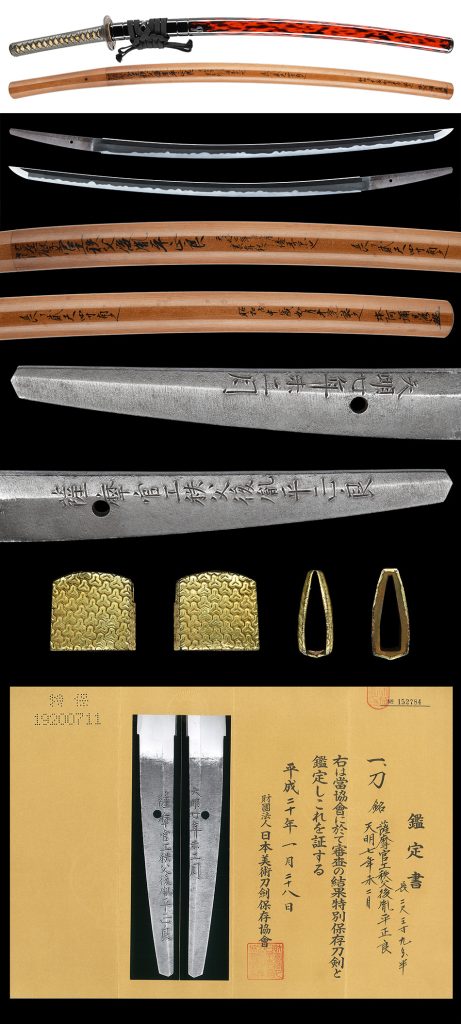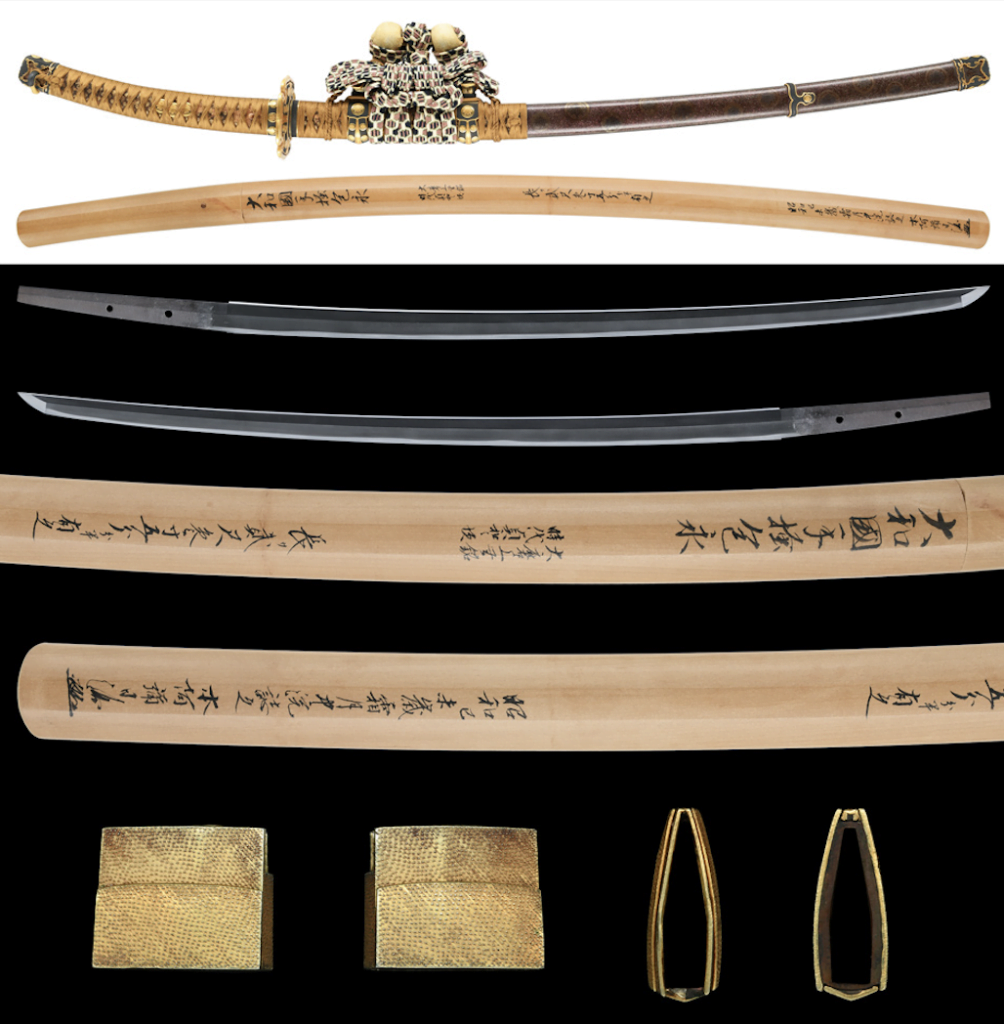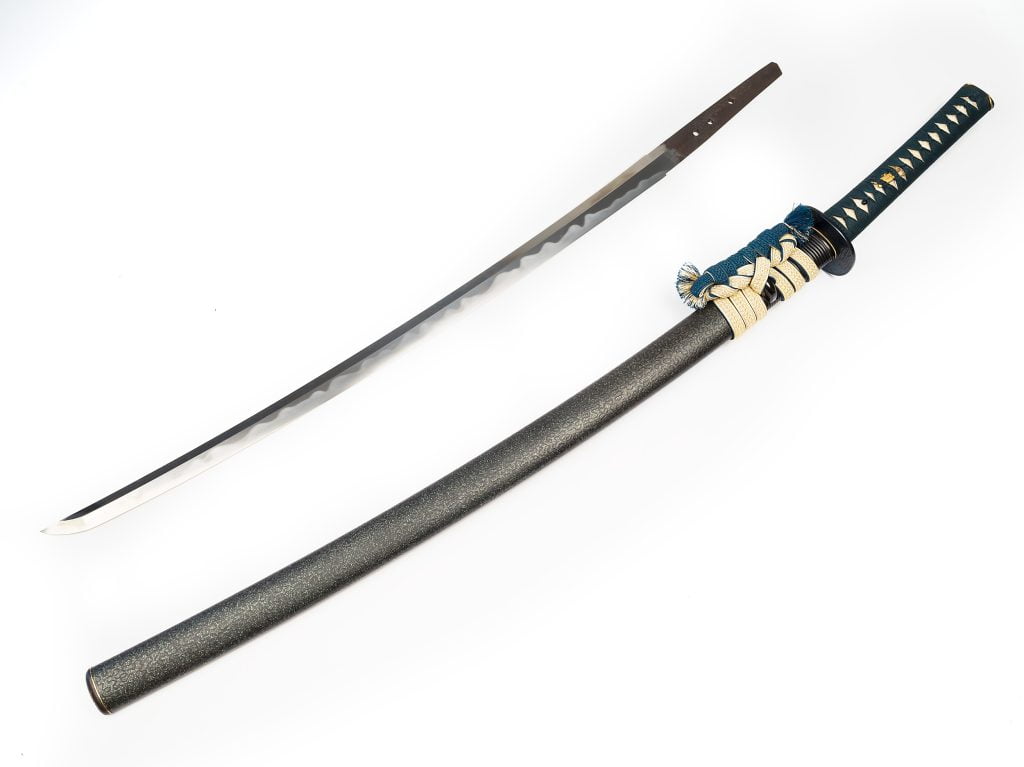Japanese master
A Boy's Tachi
Edo Period (1603 until 1868)
Mumei
A fine and rare weapon, probably with a venerable blade that is worth restoring, belonging to a boy from a wealthy family of the Japanese military Buke nobility.
The blade is firmly connected to the tsuka (L / Nagasa 51 cm) in Shinogi-zukuri with Iori-Mune, Ko-kissaki and increased corrosion in the area of the Monouchi. Hamon in Hoso-suguha, Ji-hada (where to recognize) dense Ko-itame. Tsuka and Tsuba made of finely engraved and gold-plated non-ferrous metal. Saya painted in Kin-Nashiji-hada (“gold pear skin”) with depictions of the Hô bird. L 75cm.
Boy’s tachi (kanji: 童太刀, dōtachi) were miniature versions of the tachi, a curved sword traditionally worn by samurai in Japan. Unlike their full-sized counterparts intended for combat, boy’s tachi served a primarily symbolic purpose within the samurai class. Generally shorter than a standard katana and proportionally smaller in all aspects, the quality of these swords varied depending on the smith and the family’s wealth. Some were well-crafted with traditional materials, while others might be simpler. In some cases, the blade might even be made of wood (tsuname) for younger boys, prioritizing safety over functionality.
The gifting of a boy’s tachi around the age of 5-7 marked a crucial coming-of-age ceremony. It symbolized the child’s initiation into the samurai way of life, instilling a sense of responsibility and discipline. By wearing and caring for the tachi, even a miniature version, boys familiarized themselves with the proper handling and etiquette associated with samurai swords. This fostered a deeper connection to their heritage and martial traditions. In some instances, the quality and ornamentation of the boy’s tachi might reflect the family’s social status. A more elaborate tachi could signify the family’s lineage and standing within the samurai hierarchy.
It’s important to note that boy’s tachi are relatively rare compared to standard-sized swords. This is likely due to their specific purpose and the nature of childhood. Many might not have been preserved through the ages. Boy’s tachi transcended mere toy status. They were significant stepping stones in a young samurai’s upbringing, serving as a constant reminder of their heritage, responsibility, and the path that lay ahead.
Provenance:
Private collection, Japan
Private collection, Zürich





